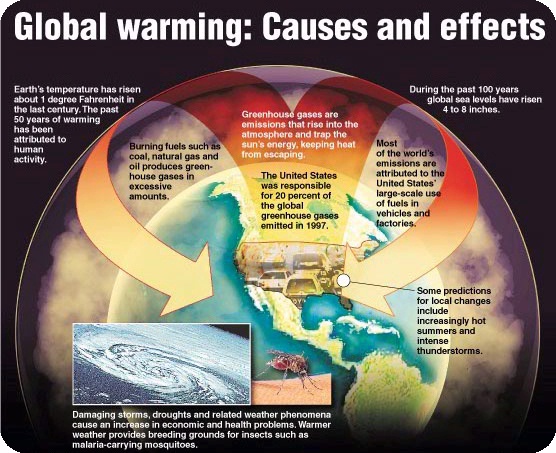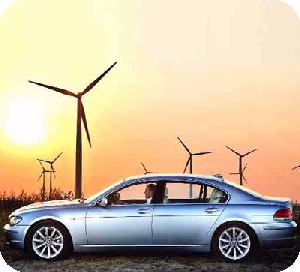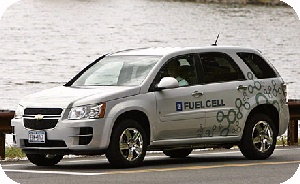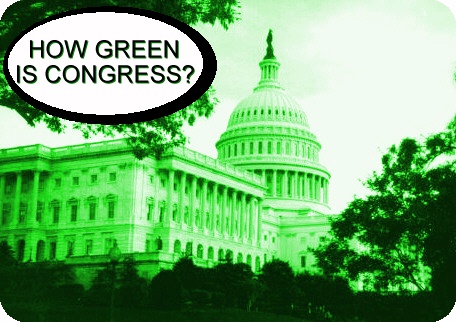 |
|||||||
|
Articles about the Environment
Agriculture & Fishing
Architecture
Cars & Transportation
Conservation & Clean Up
Ecofeminism & Ecofashion
Energy
Global Warming
Politics
Cultivating a Sustainable Future: Agriculture and the EnvironmentBy Chaz G. T. Patto - June 2023. The future of agriculture holds immense potential for addressing pressing environmental challenges such as climate change, biodiversity loss, and resource depletion. As the global population continues to grow, and the demand for food surges, sustainable agricultural practices are crucial to ensure food security without compromising the health of our planet. In this article, we delve into the innovative approaches and technologies that promise to shape the future of agriculture with a strong focus on environmental sustainability. Climate-Smart Agriculture: Climate change poses significant risks to agricultural productivity, making it imperative to develop climate-smart agricultural practices. This approach involves implementing techniques that mitigate greenhouse gas emissions, adapt to changing climatic conditions, and build resilience in farming systems. In the future, we can expect increased adoption of climate-smart practices such as precision agriculture, agroforestry, and conservation agriculture. These methods aim to optimize resource use, reduce chemical inputs, sequester carbon, and enhance soil health, leading to more sustainable and climate-resilient farming systems. Agroecology and Regenerative Agriculture: Agroecology and regenerative agriculture principles prioritize the integration of ecological principles into farming practices. These approaches emphasize biodiversity conservation, soil regeneration, and ecosystem health while minimizing reliance on synthetic inputs. The future of agriculture will witness a shift towards agroecological practices, such as organic farming, permaculture, and agroforestry. By embracing diverse crop rotations, natural pest management, and soil-enhancing techniques, farmers can promote ecological balance, enhance soil fertility, and reduce environmental impacts. Precision Agriculture and Digital Technologies: The integration of precision agriculture and digital technologies is revolutionizing farming practices by optimizing resource use and reducing environmental footprints. These technologies include remote sensing, drones, data analytics, and Internet of Things (IoT) devices. Through real-time monitoring and data-driven decision-making, farmers can precisely apply inputs, such as water, fertilizers, and pesticides, minimizing waste and environmental contamination. This targeted approach enhances resource efficiency, reduces pollution, and improves crop productivity. Vertical Farming and Controlled Environment Agriculture: Vertical farming and controlled environment agriculture offer innovative solutions for sustainable food production in urban areas. These practices involve cultivating crops indoors, utilizing vertical stacking and advanced lighting, and carefully controlling temperature, humidity, and nutrient levels. By optimizing growing conditions and reducing the need for land and water, vertical farming minimizes the environmental impacts associated with traditional agriculture. It offers the potential for year-round crop production, reduced transportation distances, and lower pesticide usage, leading to a more sustainable and localized food supply chain. Collaboration and Knowledge Sharing: The future of agriculture with respect to the environment relies on collaboration and knowledge sharing among farmers, researchers, policymakers, and communities. Sharing best practices, supporting sustainable farming initiatives, and fostering partnerships can accelerate the adoption of environmentally friendly techniques. Investments in research and development, education, and extension services are vital for equipping farmers with the knowledge and tools to implement sustainable practices. Additionally, policy support, financial incentives, and market mechanisms that value sustainable production can drive the widespread adoption of environmentally conscious farming methods. Final Thoughts: The future of agriculture holds immense promise for sustainable food production while mitigating environmental impacts. Embracing climate-smart practices, agroecology, precision agriculture, vertical farming, and fostering collaboration can transform agriculture into a regenerative and environmentally friendly sector. As we navigate the challenges of a growing population and a changing climate, it is crucial to prioritize the development and implementation of sustainable agricultural practices. By cultivating a harmonious relationship between agriculture and the environment, we can ensure food security, protect natural resources, conserve biodiversity, and create a resilient and sustainable future for generations to come.
What if there was an App that helped to improve the Environment?These days there are apps for practically everything, including "happiness apps" that are designed to make you happier. But can an app really buy you happiness? Hmm. What if? Maybe. What if you would be happier (or less stressed) if you knew you were helping the environment in some way? How could this be accomplished? Option 1: An app that tracks your personal (or family's) carbon footprint. The WWF Carbon Footprint Calculator is an app from the World Wildlife Foundation, but it isn't the only app of its kind. There are many such apps out there which are designed to help you reduce your carbon footprint. You then feel better about yourself because you've reduced your carbon footprint and did your part to reduce global warming / climate change. Option 2: Any app that encourages you to use your bicycle more often. Strava and Zwift are two apps designed specifically for people on bicycles as a map tool so you can find the fastest routes to and from work and other activities. You could just use Google Maps to do the same thing, but such apps come with extra features just for cyclists. Plus you reduce your carbon footprint while getting exercise, so you feel better about yourself physically. Option 3: Show you mean business by investing in green tech. There are many companies out there that make solar energy, wind turbines, etc and you can invest in them via apps like WealthSimple in Canada, and also Robinhood in the USA. Using such apps you then choose from a variety of companies that make and/or sell green tech. It doesn't have to just be solar and wind either. You can also invest in electric cars or hydrogen cars. Eg. Tesla (NYSE:TSLA), Air Products & Chemicals (NYSE:APD), Bloom Energy (NYSE:BE), Ballard Power Systems (NASDAQ:BLDP), Cummins (NYSE:CMI), FuelCell Energy (NASDAQ:FCEL), and Plug Power (NASDAQ:PLUG). Note: Join Wealthsimple. Use this link, and get TWO free stocks to trade! https://my.wealthsimple.com/app/public/trade-referral-signup?code=I30GVG Hydrogen cars are going to be HUGE in the future because they have more range than electric cars and they are faster to refuel. Electric cars may sound like a good investment right now because Tesla's stock is so high, but expect that stock to come back down when more hydrogen fueling stations become operational during the next 20 years and any companies that are in the business of making hydrogen for cars are going to be rolling in the money by 2040. Option 4: Carpooling Apps Sometimes you cannot get from A to B on a bicycle because it is too far or you have to carry something heavy with you. A carpooling app can help you save on your carbon footprint while still getting the job done. Uber is a possibility, but so is Carma Carpooling - an app specifically for carpooling - so that you are reducing your carbon footprint as much as possible. Thus you still get the job done, but you can feel happy that you've reduced the carbon footprint needed to do it. Option 5: Social Media Awareness Do your part to raise awareness about the environment by using apps like #Climate. Yes, that is really the name of the app. The app is geared to give people talking points when sharing information from that app to other social media apps like Facebook, Twitter, Instagram, etc. Or you can use a different app like Ecoviate, which works a bit like a game by awarding you points for your contributions, while providing you a newsfeed of environmentally friendly activities and posts on eco-friendly tips and products which you can then share via social media apps. Option 6: Use an app to conserve water Worried about how much water you are using every day? You can use an app like Dropcountr to measure every drop of water you are using and then cut back on how much you are using. Option 7: Buy more food from local farmers Farmstand is an app which helps you to find local farmers and farmers markets, allowing you to buy locally sourced food, ultimately cutting down on the amount of food you are buying that was shipped on airplanes and then trucked to your local grocery stores. This way you are helping local farmers, helping the local economy, and reducing the carbon footprint of your food. Also stop buying avocados! If they're not grown locally then you're shipping them all the way from Mexico on trucks. Option 8: Track the enviromental impact of products you buy GoodGuide is an app which tracks the environmental damage various products cause, which means you can avoid purchasing products which are super damaging for the environment, or at very least cut back on how often you use them once you learn how bad they are. You can also take it a step further with an app like Oroeco, which tracks your food, but also your transportation. So yes, there are definitely apps out there which can help you to improve the environment. Will they make you happy? Not necessarily, but we hope so!
|
|
||||||
Recycling Paper in the Digital AgeThe Digital Age isn't so Environmentally Friendly... Or is it? By Charles Moffat - December 2012. It is December 2012 and a relative of mine has finished producing and printing her 2013 Calendars, featuring a selection of nature photography from 2012. She does it more as a hobby, but her photography is quite good and she makes a tidy profit off the sales. An additional selling point of her calendars is that they're made of 100% recycled material and the recycling process is environmentally friendly (often the chemicals used in recycling paper are dumped back into the environment and they're not the most friendly chemicals). That is something we often forget about. How the recycling process is actually accomplished and the chemicals involved. It is still way better however than chopping down trees and churning them into paper, but if we can use a process that is less harmful then we should certainly do so.
Which brings me to the topic of environmentally friendly printing. Waterless Printing is similar to lithography and is basically an offset lithographic printing process that eliminates dampening-related volatile organic compounds (VOCs) from the printing process. VOCs are linked to the deterioration of the earth's ozone layer, which protects the earth from various forms of radiation and helps slow down global warming Thanks to scientific innovation we now have water-washable inks, the waterless pressroom makes printing processes virtually VOC-free. Printing presses using Waterless Printing register faster, produce better quality colours, and then hold those colours consistently throughout the press run, resulting in paper savings of 30 to 40 percent. Normal printing processes often have errors due to inconsistent colours and the paper is wasted. Thus we complete the loop. From recycled paper, to the recycling process being environmentally friendly... to the printing process being environmentally friendly. Its proof that the entire paper industry can produce, print and recycle paper without damaging the environment. So why then are we still buying freshly made un-recycled paper? I blame the big corporations who are always looking to save money. They might claim to be environmentally conscious in their advertising, but when pressed on the topic they're buying truckloads of unrecycled paper just for record keeping. If you've ever worked for a bank, a pension company or an insurance company you know these places love keeping "hard copy records" of every transaction they do. Their argument is that if something ever happens to the computers (like in the event of a nuclear war) then they will still have hard copies on paper of all their records. At which point a little kid should raise their hand with a question and ask: "But doesn't paper burn, so what difference will it made?" Honestly, if we're facing a nuclear holocaust I think whether people have insurance records for their home will make very little difference. But therein lies the idiocy of big corporations. They waste millions of dollars having warehouses full of old records on paper for the future event of if the computers ever fail to work. Now true, a computer hacker or virus might be able to wipe out those records... but anyone with a computer science degree will tell you that those records are never truly removed from the harddrive and their imprint can be restored. And anyone with a box of matches can also tell you that paper records can also disappear in an act of arson. I was recently speaking with a friend and they mentioned how they keep paper copies of all of their writing, because of their fear that if something ever happens to the computers that all of their writing would be destroyed and they would leave nothing behind. To which I jokingly asked: "Wait, so does that mean during the post-apocalypse you're going to carry around copies of your books with you? Don't you think you will have better things to carry?" I admit yes, I would feel a certain amount of loss if most of my poetry, short stories and novels were destroyed. But to be fair, if I was living in the post-apocalypse my old stories would be something left behind as society is thrown back into the dark ages. Although in theory if we simply recycled the things we already have more efficiently instead of wasting things and fighting over resources, shouldn't we be able to prevent wars over resources? Oil, wood, water, food... Only three of these we really need to survive and have shelter over our heads. We have the technology to replace oil with hydrogen power, but we lack the political and economic motivation to make the effort. Which brings me back to the topic of recycling paper. Corporations lack the motivation to buy and use recycled. New paper is cheaper. So here is my proposal. Lets put a tax on new paper and a subsidy on recycled paper. Make the tax and subsidy ratio enough so that new paper costs 10 to 20 percent more than recycled paper. Sure the paper pulp industry will be hurt, but the recycled pulp industry will be booming. It won't hurt any jobs in the long run, it will simply transform the industry. Then corporations will think twice about their choice of paper. And hopefully think twice about their printing processes too. And then presumably realize all those warehouses full of paper records are largely wasteful in the first place, and send them to be shredded and recycled.
US Congress Ready to Tackle Global WarmingRoddy Scheer - January 2007.
With Democrats settling into their leadership roles after taking control of both houses of Congress earlier this month, global warming seems to be the issue du jour on Capitol Hill. Last week, new House Speaker Nancy Pelosi (D-CA) kicked things off by proposing the creation of a special House committee to deal with human-induced climate change and produce a viable emissions reduction bill by mid-summer. “This is a really gutsy move by the speaker,” said Phil Clapp, president of the nonprofit National Environmental Trust. He praised Pelosi for helping to build momentum to put in place a regulatory structure for reducing greenhouse gases. “Action on global warming is so urgent that the speaker has probably taken the only course that could produce a comprehensive bill before the 2008 elections swamp the political process,” Clapp said. Meanwhile, in the Senate, two presidential hopefuls, Barack Obama (D-IL) and Arizona John McCain (R-AZ), have collaborated with Connecticut’s Independent Senator and former Vice Presidential candidate Joe Lieberman on a bill that aims to reduce annual U.S. greenhouse gas emissions by two-thirds within a few decades. At this point it’s unclear when such a bill would be introduced, as it would surely face stiff opposition from the White House and industry. The Senate’s new Energy and Natural Resources Committee chair, Jeff Bingaman (D-NM), is proposing a more modest global warming bill that would allow greenhouse gas emissions to continue rising until 2030, at which point they would start to be cut. “I am committed to developing bipartisan climate change legislation that can pass the Congress this year,” Bingaman told reporters. The very existence of new proposed legislation from Congress on climate change is a promising development as far as environmentalists are concerned. And with avowed global warming skeptic George W. Bush gone from the White House in 2008, some kind of progress seems possible.

Cow PowerJim Motavalli - January 2007. Vermont had 2,500 dairy farms in 1993; now it has 1,400. The low price of milk is one culprit: it’s down from $17 per hundredweight (12.5 gallons) at its peak to $12 today. To stay competitive, dairies have to be innovative. One way they do that is by going organic, since organic milk fetches $30 per hundredweight. Another way is by emulating Blue Spruce Farm in Bridport, Vermont and tapping into cow power. The farm, long owned by the Audet family, is sizable for Vermont, with 1,000 Holstein milking cows. Not a confinement system (the cows can move around their barn), Blue Spruce isn’t organic, either. But it’s green in another way. The manure from all those pooping cows, collected by “alley scrapers” that run along the floor like a giant squeegee, is processed into renewable electricity. There are other benefits as well. David Dunn, a senior energy consultant with cow power sponsor Central Vermont Public Service Company, sticks his hand into a giant pile of powdery waste, unfazed by its former life as cow manure. The odorless byproduct makes excellent fertilizer, potting soil (“Moo Doo”) and cow bedding. “This farm doesn’t have to spend $1,200 a week on sawdust for bedding anymore,” he says. According to Marie Audet, the family spokesperson, 400 homes could be powered by the electricity produced on the farm. The waste goes into an anaerobic (oxygen-free) digester and sits there for three weeks, during which time it produces methane (a fuel doubling as an extremely potent global warming gas) that is captured and used to power two large Caterpillar electricity generators, totaling 275 kilowatts. The Audets have invested $1.3 million in the operation, but with $120,000 a year in electricity sales they expect to recoup their costs in seven years. Green Mountain College in nearby Poultney has agreed to buy 1.2 million kilowatt-hours of the Audets’ cow power electricity annually, tacking a $48,000 surcharge on its bill. “It’s time to walk the talk,” says Green Mountain President John Brennan on a recent tour of the cow barns and digester. “This helps the market for renewable energy, and it avoids the emission of global warming gasses.” Other Vermont farms are also planning to invest in cow power operations, and the idea has gone national. The 2002 Farm Bill provides federal funds through the Renewable Energy Systems and Energy-Efficiency Improvements Program. Lodi, California’s Castelanelli Brothers Dairy (with 2,100 cows) tapped into it for $160,000 to help pay for an anaerobic digester that will produce up to 180 kilowatts. Another operation, also federally assisted, is underway at the Dairyland Power Cooperative in Elk Mound, Wisconsin. Cow power is on a roll.
COMMENTARY: Car Free in AmericaThe Alternative is Rail, Buses, Bikes and Just Plain Walking Jim Motavalli - January 2007. General Motors executives like to say that the fuel-cell car “will take the automobile out of the environmental equation,” when really it will only solve the tailpipe problem. Cars will still take up space, create gridlock and drive development decisions. Many of us have seen old photographs of the comprehensive trolley and railroad lines that used to serve even the smallest American community, and wondered whether we’ve really made “progress” since then. Though the commuter of 1912 lacked an interstate highway system, he or she could walk out the front door, hop a trolley, then connect to an efficient national rail network with 300,000 miles of track. Our shrunken, financially imperiled Amtrak system is a ghost of the network we tore up in search of modernity and the personal freedom afforded by automobiles (our rail infrastructure now has half as many miles as existed in 1912). But cities are beginning to rebuild what was lost, turning to light-rail systems, fast ferryboats and dedicated bus corridors, among other new approaches. The American Public Transportation Association (APTA) is full of relatively happy news:
“Even as gas prices declined, more and more people decided to ride public transportation,” says APTA President William W. Millar. “This continued increase in transit ridership demonstrates that when people have transportation choices, they use them.” Last January, APTA released a study that found that transit saves 1.4 billion gallons of gasoline every year, the equivalent of 108 million cars filling up, almost 300,000 each day. If twice as many Americans had transit choices, we’d save 2.8 billion gallons. Two-worker households that use public transit on a given day save more than $6,200 a year on average. Some 62 American cities now have or plan to build light-rail systems. APTA reports that there are now 651 light-rail stations around the country, operated by 26 transit agencies. Commuter rail agencies add another 1,153 stations. Funded proposals will add 131 new stations in coming years. Despite transit critics who charge that light rail offers “limousine-priced” rides to people who would otherwise have taken the bus, there’s ample evidence that transit is cost-effective (especially when the cost of gridlock is taken into account), and ridership is increasing from people who would otherwise have taken their cars. When the St. Louis light rail opened in 1993, according to the Milwaukee Journal, not only did the number of passengers far exceed expectations but bus ridership also increased 20 percent. In Toronto, Canada, transit carries 77 percent of all downtown-bound commuters during rush hours. Portland, Oregon’s Tri-Met light-rail system eliminates 187,000 car trips every day, or 58 million per year. The Federal Transit Agency reports, “Americans lose more than 1.6 million hours a day stuck in traffic. Without transit, the nation’s $40 billion in annual traffic congestion losses would be $15 billion higher. In fact, if all the Americans who take transit to work decided to drive, their cars would circle the Earth with a line of traffic 23,000 miles long.” Long-distance trains, so-called “heavy rail,” are also making a comeback, despite setbacks. Amtrak as a whole has lost about $25 billion since it was created in 1971, a staggering sum until you consider the $40 billion annually spent on highways. States are banding together in high-speed train “compacts” designed to provide ultra-fast and competitive rail service for such regions as the Midwest, Florida, the Northwest and California. The model is Amtrak’s Acela train between Boston and Washington, D.C., which travels at speeds of up to 150 miles per hour. That’s slower than European trains, but it’s fast enough to be competitive with flying, especially when including the time consumed in getting to airports and checking through new security procedures. The Acela train has had many teething problems, but it’s still a popular travel alternative. (The part of Amtrak that loses money is the long-distance cross-country routes, because it’s much quicker and cheaper to fly, but these routes are protected by pork-barrel political interests.) Rapid-transit ferries can compete with cars in commuting times. The city of Sydney, Australia, for instance, makes major use of ferryboat commuting, as does Hong Kong, Seattle and Vancouver, British Columbia. There are some environmental problems and some cost issues with ferries, but, overall, when you have feasible water routes, it’s a great mode of transport. Biking is also gaining in popularity, for health, for its environmental benefits and to eliminate auto-related costs. Owning a car for a year can cost more than $7,000. According to the League of American Bicyclists, operating a bicycle for a year weighs in at $120. Many insurance companies also reduce rates for commuters who bicycle to work rather than drive. The National Personal Transportation Survey found that approximately 40 percent of all trips are less than two miles in length—which represents a 10-minute bike ride or a 30-minute walk. Fifty-four percent of all commuters live within 10 miles of their worksite—making their commute time by bike or car just about the same. Employers also benefit, because studies show that people who bike to work are more productive and take less time off for illness. Bikers cut down on an employer’s need to subsidize employee parking, and exercise tends to make workers more alert. If bicycling seems too strenuous for you, there are a range of electric-assisted bicycles (with a top speed of about 15 miles per hour and a 20-mile range) available that give you a motorized push up hills and other obstacles. You can motorize a bike yourself with an affordable kit, or pay $500 to $3,000 for a ready-made unit. Santa Cruz County, California gives $375 rebates for electric bike purchases. And, of course, there’s always the Segway gyroscopic scooter, though they remain rather expensive novelties and not the transportation revolution that founder Dean Kamen envisioned. Our transportation choices obviously have a major impact on the environment, so what can we do to lessen our impact on the planet and reduce our dependence on foreign oil? If we could prepare for the coming hydrogen-based energy economy by promoting interim clean-car technologies and a national public transportation network, we’d certainly be making major progress! Life without Cars? The Europeans and South Americans are far ahead of the car-dependent U.S. in taking back the streets. The English anti-roads movement actually stopped construction of some highway bypasses after activists blocked traffic. In the U.S., anti-car activism is largely restricted to bicycle advocacy, with groups such as Critical Mass and Transportation Alternatives occasionally blocking traffic and demonstrating for better bike access. European car-free zones have become very successful. Sixty cities have declared that they’re going to make their centers car-free. Britain has developed a car-free day, which is supported by 75 percent of the British public. Similar ideas have spread to Central and South America. In some places, such as Athens or Singapore, because of pollution problems, you can drive only every other day (license plates ending in an odd number one day, even the next), and London now is charging cars a hefty fee to enter the city center. In Copenhagen, Denmark, 30 to 40 percent of commuters get to work by bicycle. Although vehicle miles traveled and the number of cars in the world grows every day, some very green shoots are starting to show themselves through the concrete.
|
|||||||
|
|
|||||||







